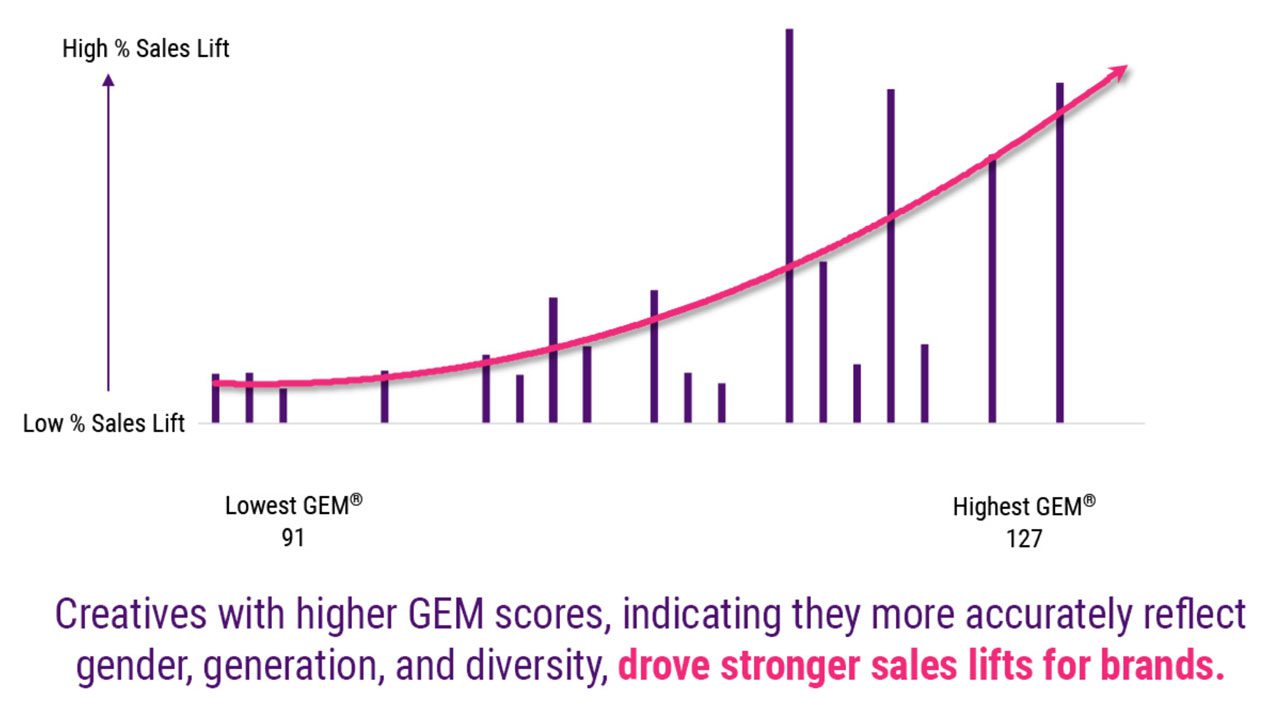By Erika Digirolamo, Senior Director, Media & Analytics and Yeimy Garcia Smith, SVP, Global Measurement
Some of this year’s most notable Super Bowl ads didn’t just focus on showcasing products like body wash, pharmaceuticals, and athletic apparel — they sought to connect deeply and emotionally with women of all ages. Messages centered on breast cancer detection, the damaging impact of body shaming, and stories of women experiencing athletic achievement resonated with consumers and highlighted the growing importance of inclusive advertising. Online reactions showed these ads struck an emotional chord. However, creating impactful, inclusive campaigns is only half the battle.
Research from Circana and SeeHer reveals ads accurately representing diverse women can foster strong emotional resonance while significantly boosting sales, especially among younger and more diverse audiences. With millions invested in such efforts, brands must go beyond emotional connection and ensure their campaigns reach their intended audiences in meaningful ways. Measuring the tangible impact of inclusive advertising, both in terms of engagement and sales, is critical to validating its efficacy.
The benefits of measuring diversity and inclusion in marketing
Last year, Circana and SeeHer, an arm of the Association of National Advertisers, investigated whether inclusive representation in advertising could create a measurable competitive edge by enhancing sales, consumer trust, and loyalty. They also questioned whether data-driven tools could reveal missed revenue and engagement opportunities with key audiences, especially among younger and diverse audiences who increasingly expect brands to reflect inclusivity and authenticity.
The research, which combined Circana’s Lift methodology and SeeHer’s Gender Equity Measure (GEM) Score, found:
- Advertising that accurately portrays diverse women can increase sales lift by up to 10 times, revealing that authentic portrayals can significantly enhance consumer purchase behavior, engagement, loyalty, and trust.
- Accurate portrayals of women spanning generations resulted in a 4x increase in sales lift among Gen X and older millennials and a 9x increase in sales lift among Gen Z and younger millennials.

Clearly, inclusive representation in advertising isn’t just the right thing to do, it’s a measurable business strategy.
3 steps to start measuring the impact of inclusive advertising
For marketing leaders, the challenge is to operationalize inclusivity in a way that resonates with consumers and delivers measurable business impact. There’s a structured approach marketers can follow to achieve that.
Step 1: Embed inclusivity into the campaign-planning process
Before activating any campaign, brands must first identify their core growth-driving consumer segments and assess whether their media investments align with those audiences. Are they reaching the right people with the right message that will drive action? Are those growth-driving consumer groups represented in their advertising? Are they using the most effective media channels to engage them?
Circana’s audience capabilities empower brands to build precise audience segments based on actual purchase behavior. This ensures brands reach a qualified audience segment and understand the demographic profiles of those audience segments. With these insights, brands can strategically plan and activate campaigns that support their growth goals while ensuring authentic representation in their content.
Step 2: Develop campaigns with measurement in mind
Effective campaigns start with clear objectives. Brands must integrate learning priorities, investment, and analytics into their business growth plans from the beginning. They also must ask themselves: How will we assess whether inclusive messaging is driving conversions? Do we have the right measurement tools in place to analyze impact?
Consumer-centric measurement solutions, such as Circana’s Household Lift and Consumer-centric Market Mix Model, help brands gain a comprehensive view of their media performance against the various audience segments they aim to influence. Marketers can assess how consumer segments — like heavy buyers, millennials, or households with children — respond to different marketing strategies. By integrating media and purchase data, marketers can optimize their efforts to align with their most valuable audiences.
Step 3: Complete the circle: Apply measurement data to future campaigns
Measurement is not a one-time exercise — it’s an ongoing process that informs continuous improvement. Too often, brands fail to integrate their findings into subsequent campaigns, missing valuable opportunities for optimization. Marketers should encourage their teams to not just track metrics but to analyze and reapply insights from every campaign. And, they should ensure the strategic planning process includes a structured approach to ingesting and applying past learnings, and use measurement data to refine creative, audience targeting, and media strategies.
If a campaign consistently demonstrates stronger performance when featuring diverse portrayals of women, this insight should guide future creative decisions, audience selection, and media investment. The Circana and SeeHer study proved that prioritizing accurate and diverse representation leads to measurable business success.
Inclusivity is a growth strategy
Brands that embed inclusivity into their marketing strategies are doing the right thing – and they are making a smart investment in long-term growth. By leveraging data-driven audience insights, establishing clear measurement frameworks, and continuously applying learnings, brands can create more meaningful connections and drive sustained success. With Circana’s capabilities, brands have the tools they need to turn inclusivity into a competitive advantage and deliver messages that resonate with diverse audiences.
Get insights straight to your inbox





